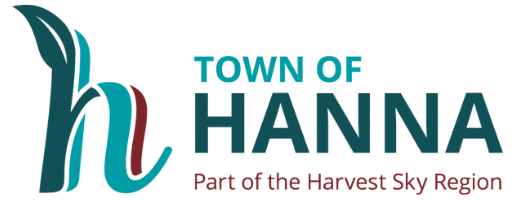Game Hunting
The prairie landscape of Hanna and the Harvest Sky Region provides ample hunting opportunities for mule deer, white-tailed deer, and antelope – it’s truly a sportsman’s paradise. Mule deer and antelope are hunted on a limited entry draw so residents and non-residents can increase trophy opportunities. Non-resident (outside Canada) licenses are monitored by an allocation/bid system through Sustainable Resource Development. Any non-resident wishing to hunt big game in Alberta must do so through a licensed outfitter guide or hunter host license.
Annually, mule deer are harvested in the 180 to 190 plus range, white-tailed deer in the 160 to 170 plus range, and antelope in the 80 plus range. Of course, we all know that the success of the hunt depends on one’s ability and luck. Alberta’s deer generally rut during the month of November, thus providing the best hunting opportunity. Unless of course you are a bow hunter in which case you may want to consult with your guide to determine the best time to book your hunt.
Hunting regulations are published annually and are available to the public around the beginning of June at the Sustainable Resource Development website. The hunting regulations can be found online at the Alberta Outdoorsmen website. Your chosen Outfitter Guide should also be aware of season dates and regulations pertaining to their areas.
Hunting Access
The majority of the land surrounding Hanna is privately owned or leased thus requiring permission for access. Maps detailing the owners or lessees may be obtained through:
Hanna Special Areas #2 Office
Box 820
Hanna, AB T0J 1P0
Phone: (403) 854-5600
For further information on Alberta’s hunting opportunities, varieties of terrain and wildlife, and list of Outfitter Guides available you may obtain a copy of the “Alberta’s Professional Outfitter” magazine from:
Alberta Professional Outfitters Society
6030 – 88 Street
Edmonton, AB T6E-6G4
Phone: (403) 414-0249
Fax: (403) 465-6801
Email: apos@comcept.ab.ca
We are looking forward to your visit, have a safe and successful hunt!
Bird Hunting
Hanna is placed “smack-dab” in the middle of the largest migration route and staging area in Alberta. The migration routes of four different species of geese intersect in the immediate Hanna area. Thousands of Canada (lesser and greater), white-fronted, snow, and Ross’s geese fill our wide-open skies from early September to late November providing some awesome hunting experiences.
The terrain allows for the option of hunting over or on the water as well as field shoots. Our area is also known for its exceptional duck hunting opportunities. Nineteen different species of ducks are known to frequent the area; however, hunting pressure is concentrated on the later migrations of large northern mallard and pintail.
The Hanna area is a good spot for Canada goose, white-fronted goose ( speckled belly goose) and the snow goose. In recent years, the snow goose has overpopulated so it is the only bird that can be hunted on Sundays.
District Fish and Wildlife Officer
(403) 854-5540
How to Be a Bird Guide?
There is no legal requirement to be a bird guide. For more information on hunting in Alberta visit the Alberta Guide to Hunting Regulations.
Hunting Access
The majority of the land surrounding Hanna is privately owned or leased thus requiring permission for access. Maps detailing the owners or leasers may be obtained through:
Hanna Special Areas #2 Office
Hanna, AB T0J 1P0
Phone: (403) 854-5600
Fishing
Helmer Dam
Located 2km west of Hanna.
Adjacent camping at Fox Lake Park.
Stocked annually with Rainbow Trout.
CN Reservoir
Located on south side of railroad tracks in Hanna.
Previously stocked with Yellow Perch.
Blood Indian
Located 19 miles south of Youngstown.
Rainbow Trout
Stocked by Natural Resource, Fish & Wildlife.
Helmer Dam Fish Habitat Study
Town of Hanna has embarked on a revitalization of Helmer Dam to improve the water and habitat to support recreational fishing. Phase 1 includes a summer and winter assessment. This interim report dated Sept. 11, 2020 summarizes field results collected during the summer of 2020.

